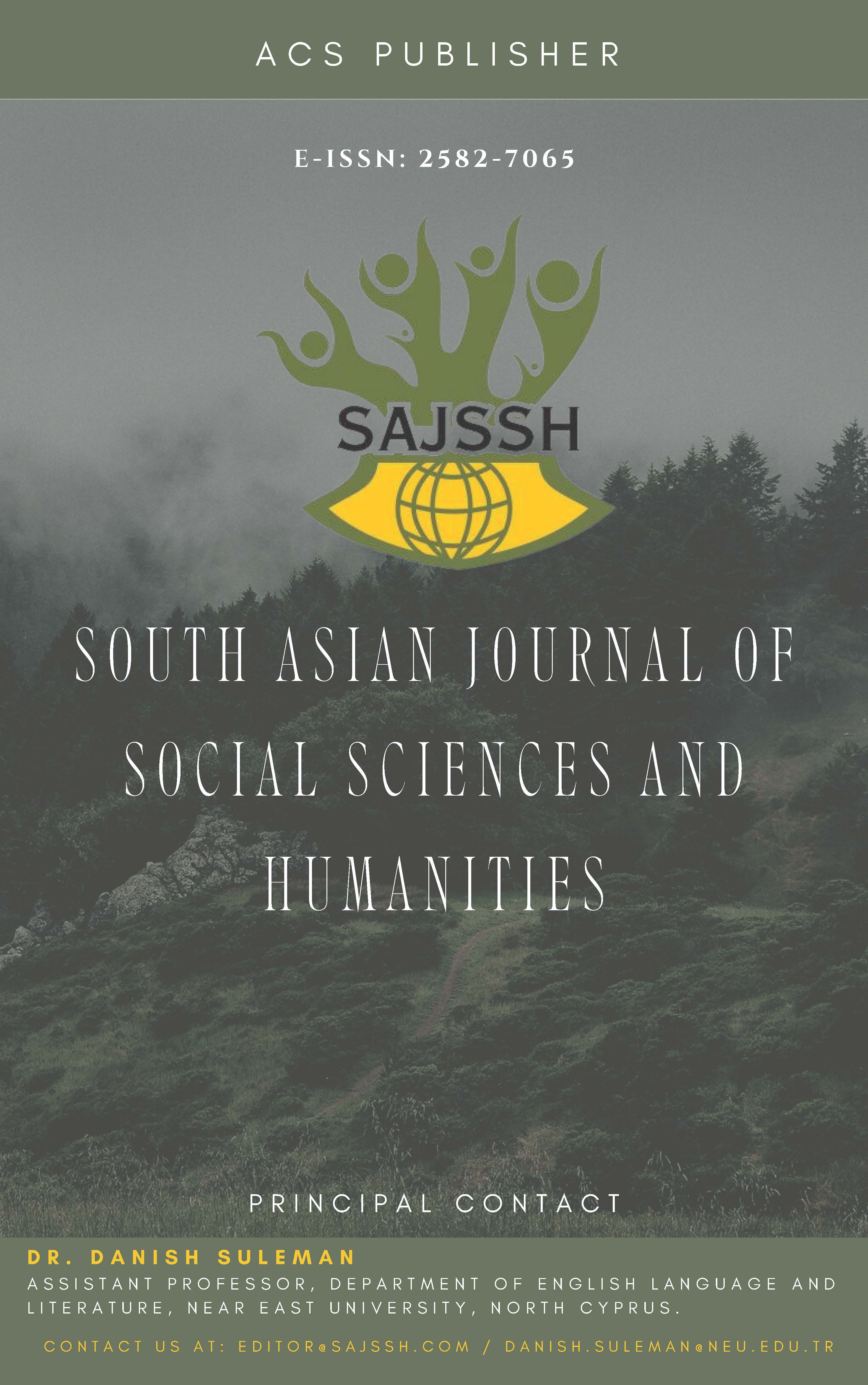Reconstructing the Self: Trauma and Identity in Frankenstein in Baghdad
DOI:
https://doi.org/10.48165/sajssh.2024.6213Keywords:
Frankenstein, Reconstructing the Self, Iraq War, Trauma, IdentityAbstract
This paper investigates trauma traces and reconstructing the self in Frankenstein in Baghdad. As the aftermaths of war do not end when it stops, its consequences should be traced and dealt with, especially the psychological effects. Ahmed Saadawi’s Frankenstein in Baghdad (2018) gives this psychological ruin a body: the Whatsitsname, a conscious corpse sewed together from Baghdad’s bomb victims. More than a literary device, this creature embodies trauma transformation in people to make them archives of violence, carrying physical proof of wounds that would never easily heal. Hence, paper explores how Saadawi’s novel redefines the common understanding of the Iraqi war aftermath, revealing how collective suffering reformats both individual psyches and national identity. Moving beyond Western trauma models that prioritize "recovery narratives," the analysis demonstrates how Iraq’s particular history of colonialism, sanctions, and occupation demands alternative frameworks. The Whatsitsname’s cyclical violence—targeting both criminals and onlookers—mirrors the real-world impossibility of moral attitudes in war areas. Its very existence challenges simplistic divisions between victims and monsters, suggesting that in war’s moral vacuum, these categories collapse into one another. So, Frankenstein in Baghdad forces us to confront the unavoidable truth which says: the distance between "us" and "monsters" is never such long as we pretend. By giving shape and name to war invisible psychological wounds, Saadawi creates not just a masterpiece of Iraqi literature, but a vital narrative in world literature about trauma, memory, and the price of survival.
References
Al-Ali, N. (2016). Iraqi women: Untold stories from 1948 to the present. Zed Books.
Alhashmi, R. (2020). The grotesque in Frankenstein in Baghdad. International Journal of Language and Literary Studies, 2(4), 34-56.
Alkhayat, M. E. F. (2013). Gothic Politics in Ahmed Saadawi’s Frankenstein in Baghdad (2013). Arab Studies Quarterly, 44(2), 45-65. Plato Journals.
Al-Leithy, M. A. M. (2023). A psychoanalytic reading of Ahmed Saadawi’s novel. IDEAS SPREAD Journal of Literary Studies, 7(2), 89-101.
Al-Mohammad, H. (2010). Order and disorder in the house. Contemporary Iraq Literature, 15(4), 267-290.
Al-Samman, H. (2015). Anxiety of erasure: Trauma, authorship, and the diaspora in Arab women’s writings. Syracuse University Press.
Antoon, S. (2013). The corpse washer. Yale University Press.
Arendt, H. (1963). Eichmann in Jerusalem: A report on the banality of evil. Viking Press. Bahoora, H. (2015). Writing the Iraqi war. Journal of Middle Eastern Studies, 47(2), 89-112. Botting, F. (1996). Gothic. Routledge.
Fanon, F. (1961). The wretched of the earth (R. Philcox, Trans.). Grove Press.
Herman, J. L. (1992). Trauma and recovery: The aftermath of violence—from domestic abuse to political terror. Basic Books.
Jebur, A. B. (2024). A Critical Pragmatic Analysis of Identity in the Novel Frankenstein in Baghdad. International Journal of Education Humanities and Social Science, 7(5), 310-326.
Karzan, Mahmood. (2023). A Study of Ahmed Saadawi’s Frankenstein in Baghdad in Light of Appropriation of Mary Shelly’s Frankenstein through Translation and Adaption Studies. Universtat Jaumi.
Khalili, L. (2012). Time in the shadows: Confinement in counterinsurgencies. Stanford University Press.
Revenant Journal. (2023). Studying violence on the land and the body in Ahmed Saadawi’s Frankenstein in Baghdad. Revenant Journal, 6(2), 45-59.
Saadawi, A. (2013). Frankenstein in Baghdad (J. Wright, Trans.). Penguin Books. Sasson, T. (2020). Wartime narratives and the ethics of memory. Routledge. Shelley, M. (1818). Frankenstein. Lackington, Hughes, Harding, Mavor & Jones.
van der Kolk, B. (2014). The body keeps the score: Brain, mind, and body in the healing of trauma. Viking.
Downloads
Published
Issue
Section
License
Copyright (c) 2025 South Asian Journal of Social Sciences and Humanities

This work is licensed under a Creative Commons Attribution 4.0 International License.





